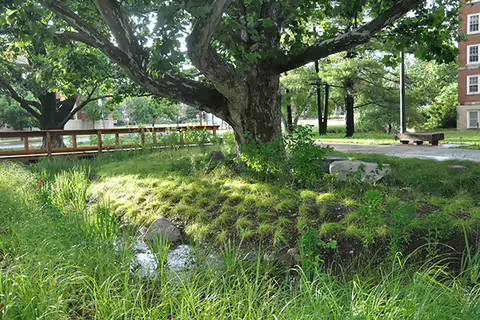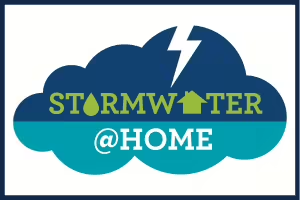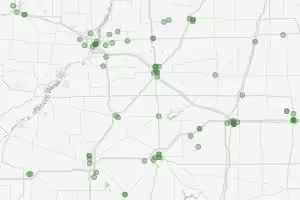Beautiful and functional, rain gardens alleviate local flooding.
There are several reasons for standing water in your yard following a heavy rain. You might have soil that doesn’t allow water to soak in quickly enough if it’s compacted or has high clay content. If you have an area in your yard where standing water is a common occurrence after heavy rainfalls, rain gardens may provide a solution.
What is a rain garden?
Rain gardens are typically bowl-shaped landscape features that capture and absorb rainfall and snowmelt. These gardens can help to alleviate local flooding issues while improving downstream water quality and recharging groundwater. They also provide a variety of other benefits, such as the creation of habitat for wildlife and carbon sequestration.
Rainscaping courses
Explore your options at an Illinois Extension Rainscaping course to learn about the details of siting, building, and maintaining your own.
- Locate your rain garden on slightly higher ground “upstream” from the area of your yard notorious for ponding.
- Build your rain garden at least 10 feet away from foundations, pay attention to local municipal codes, and avoid locating them under the canopy of trees without consulting an arborist.
- Perform a percolation test to be sure that water is able to soak in within 24 hours.
- Calculate the size of the rain garden you need and dig your garden to the proper length, width, and depth.
- Select and install plants adapted to the various conditions found in a rain garden, from the wet basin to the dry banks.
- Keep up with maintenance to sustain your rain garden at peak performance for years to come.




